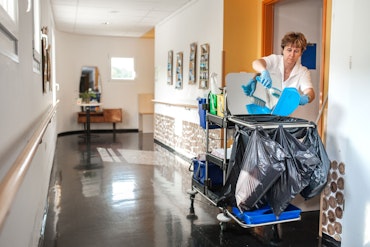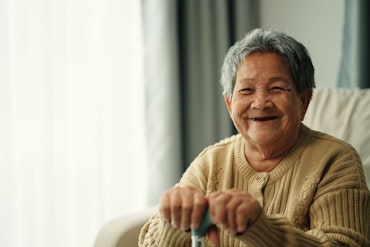Wage increase for nurses may mean better care for older Aussies in aged care homes
How wage increases could help retain nurses in the workforce and ensure older Australians get the care they need in aged care homes
![<p>Nurses work in a variety of settings, but a shortage of nurses means that older Australians in aged care facilities might not get the care they need. [Source: Shutterstock]</p>](https://agedcareguide-assets.imgix.net/news/articles/wp/wheelchairsitting2606.jpg?fm=pjpg&format=auto&w=550&q=65)
Nurses work in a variety of settings, but a shortage of nurses means that older Australians in aged care facilities might not get the care they need. [Source: Shutterstock]
Key points:
- The shortage of nurses is expected to reach approximately 85,000 by 2025 in Australia, as per Health Workforce Australia
- Nurses gathered today, June 26, 2024, to vote on the latest wage increase offered by the Victorian Government at the Melbourne Convention and Exhibition Centre
- Retaining current nurses and growing the workforce as a result of the wage increase could reduce shortages in aged care homes
A shortage of approximately 85,000 nurses by 2025 is expected to have detrimental effects on the Australian healthcare sector, such as aged care homes, with shortages predicted to exceed 120,000 nurses by 2030, according to Health Workforce Australia.
A statewide meeting in Victoria was held today, June 26, 2024, for public sector nurses to consider the wage increase. Speakers expressed their thoughts at the event and voting was completed by nurses and midwives. It was held at the Melbourne Convention and Exhibition Centre and was live-streamed to numerous other venues in Victoria this afternoon.
Nurses and midwives voted in favour of a 28.4 percent compounded wage increase today, effective by November 2027, with an additional 70 improvements to aspects of work such as terms and conditions.
For example, a level-two enrolled nurse currently earning $34.56 dollars per hour at base pay will be earning $44.37 dollars an hour by November 2027, under the proposed agreement.
The Victorian Branch of the Australian Nursing and Midwifery Federation Secretary Lisa Fitzpatrick expressed hope that the wage increase may help highlight the value of nurses and other public sector health professionals in the Australian healthcare system.
“There is still much work to do to acknowledge nurses and midwives work through the pandemic and address current workforce and staffing pressures so that nurses and midwives can start to love their work again,” she said.
“The wages and new and improved allowances and penalties and terms and conditions are designed to retain our early career and experienced nurses and midwives, recruit new nurses and midwives and start to rebuild our health system.”
Over 38,000 registered nurses are currently employed in the Australian aged care industry, with 47 percent of these nurses working part-time hours, according to the latest data available from Jobs and Skills Australia.
An increase in wages for nurses could mean greater retention in the workforce and lead to positive change in the aged care industry.
Older Australians in aged care homes can currently expect to receive an average of 200 minutes of personal and nursing care, as per information available on the My Aged Care website. This involves assistance from healthcare workers such as registered nurses and personal care workers.
However, as this is a national average, not everyone in Australian aged care homes will receive the same amount or quality of care as older Australians with higher care needs.
The Australian Primary Health Care Nurses Association expressed concern regarding nursing staff shortages which can lead to ‘an increased workload for each remaining nurse, meaning they must spend more time providing basic levels of care to more patients and less time on the type of care which can improve patient health and reduce unnecessary hospital admissions.’
Approximately 370,000 aged care workers in Australia are currently employed in direct and indirect roles according to recent statistics. However, current estimates suggest that there will be the equivalent of 212,000 full-time worker roles vacant in the aged care industry by 2050.
In May, Victorian nurses and midwives rejected the government wage policy increase of 12 percent, however, the process of these talks for an increase in wages began in October 2023.
Many older Australians reside in aged care homes and may receive assistance from nurses throughout the day. Having a minimum of one registered nurse at any time is now a requirement of aged care homes to ensure that care can be provided to residents when required.
While typical roles of a nurse include administering medication and wound management, nurses working in aged care may find themselves helping with some other tasks. Unexpected nursing duties may include: counselling, advocacy for older Australians and assisting with manual handling.
To learn more about some of the unexpected roles of working as a nurse in aged care, head to this article: What they don’t tell you when becoming an aged care nurse.
Are you a nurse working in residential care? How would this pay rise impact your life?
Let the team at Talking Aged Care know on social media.
For more information and news in the aged care industry, subscribe to our free newsletter.
Relevant content:
Retired public servant facing homelessness after waiting years for priority housing
Free service for eligible older Australians with Home Care Packages
First-of-its-kind charity launches to support older victims of cybercrime























